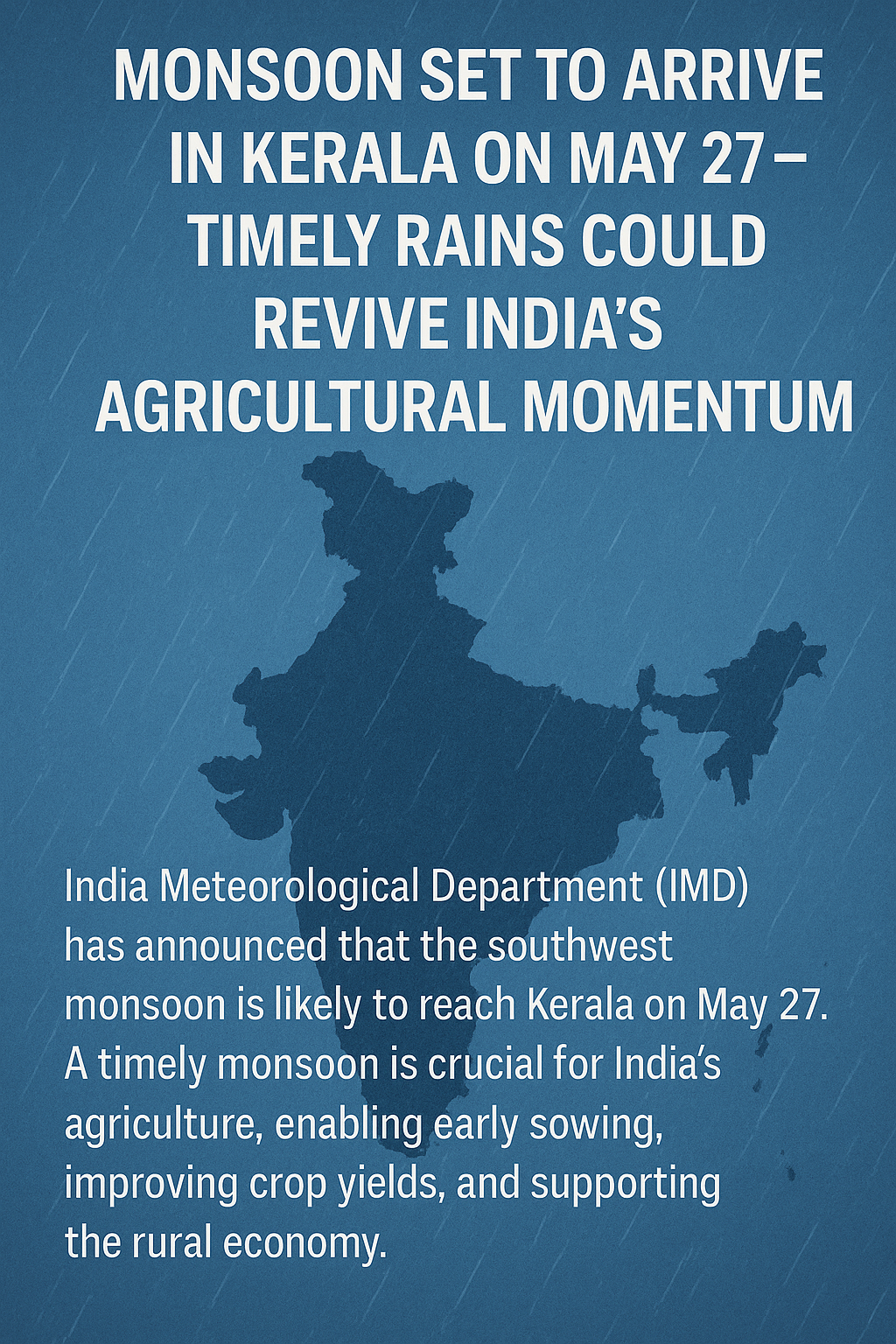The India Meteorological Department (IMD) has announced that the southwest monsoon is likely to reach Kerala on May 27, marking the official onset of the rainy season in the subcontinent. This event is of national significance — not just meteorologically but economically and socially — as it signals the beginning of the crucial Kharif sowing season for millions of farmers.
India’s agriculture is highly monsoon-dependent. Around 52–55% of the country’s net sown area relies on rainfall due to limited irrigation infrastructure. The southwest monsoon contributes over 70% of India's annual rainfall, making it a key determinant of agricultural success.
A timely monsoon leads to:
The average onset date of the southwest monsoon over Kerala is June 1, with a standard deviation of about 4 days. In the past decade, here's how the onset has varied:
A timely monsoon generally leads to:
On the other hand, a delayed or erratic monsoon often results in:
While this year's forecast is promising, climate change continues to make monsoon patterns more erratic. The frequency of extreme rainfall events and dry spells has increased, affecting both water storage and cropping patterns.
Thus, while the predicted May 27 onset offers a hopeful start, consistent and well-distributed rainfall throughout the season will be critical for ensuring sustained agricultural output and rural stability.
A timely monsoon arrival in Kerala could pave the way for a strong Kharif season and provide relief to farmers battling rising input costs and climate uncertainties. With nearly 60% of India's population dependent on agriculture, the stakes are high — and all eyes are now on the skies.
